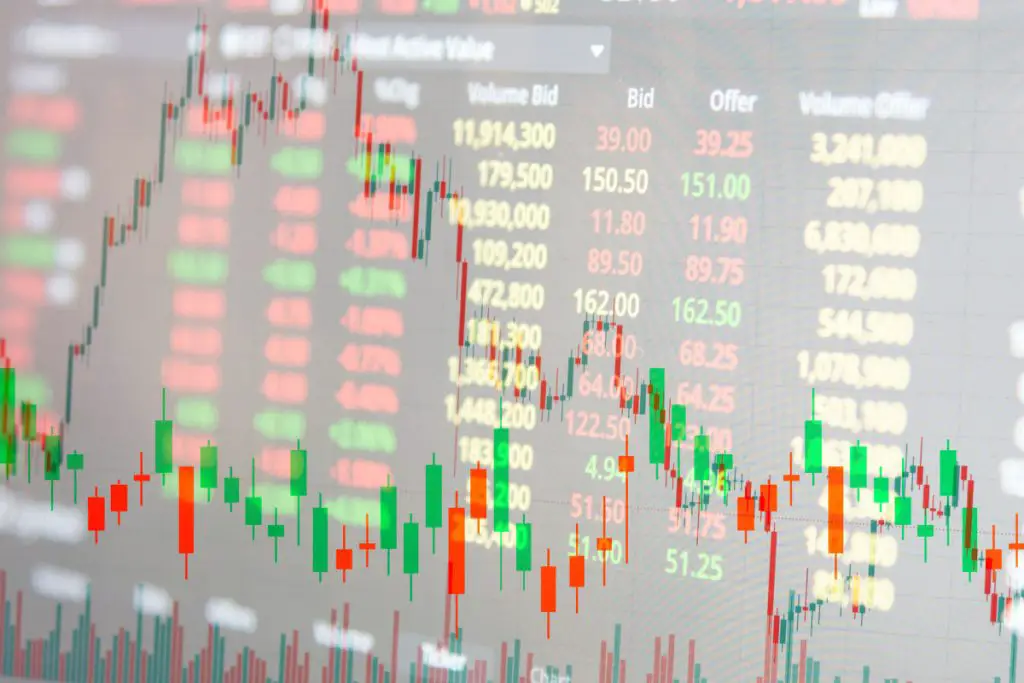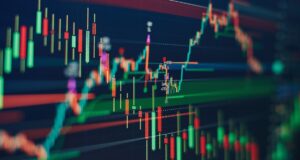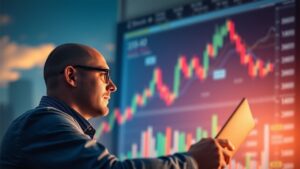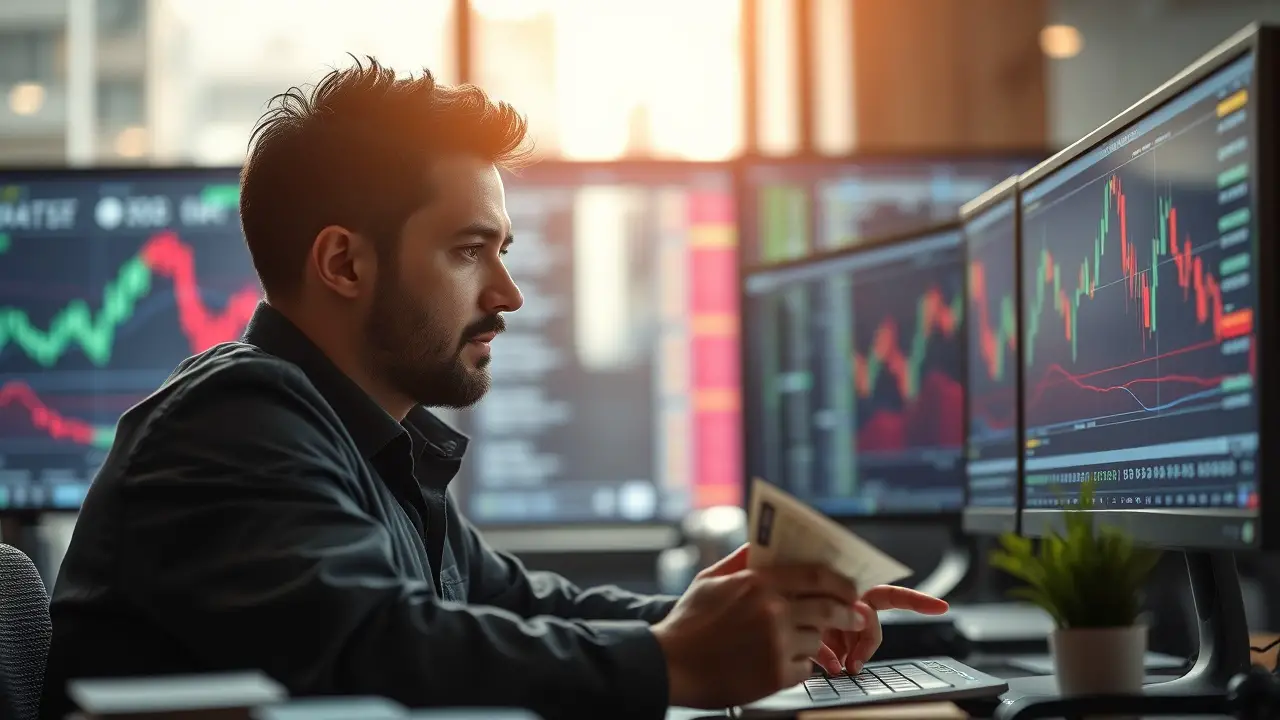Can you make money on forex with $100, a couple of days ago, I was asked if it is possible to trade on forex with $100. My answer to that question was it depends. You can read the entire post for details, but to me the answer could be yes.
Forex trading has been known as the best way to make money on an asset without actually owning it. Trading on the forex market has been around for hundreds of years and has grown in popularity over time to one of the most traded markets today.
While the forex market is widely known as a riskier venture, there are still ways to make money with a low-risk approach. If you’re just starting out and looking for ways to make money from online, this hub was made for you!
Forex (FX) markets are the largest, most liquid investment market in the world. When you’re talking about $10 trillion dollars changing hands on a daily basis, you’re looking at an immensely exciting trading opportunity.
With that said, let’s be realistic about setting our expectations for success with forex trading, because it does take a certain level of skill and knowledge to make substantial money trading currencies.
Don’t you like the idea of making money every day with Forex? I’m sure you do! But how much money do you need to start trading on Forex? There is a misconception that in order to get started on Forex, traders need millions of dollars. But this isn’t true!
Points to keep in mind
- Can you make money on forex with $100
- Why you shouldnt invest with $100
- Don’t put all your eggs in one basket
- Do make use of stop-loss orders
- Why 99% of traders lose money

Can you make money on forex with $100
Yes, you can. Forex is one of the biggest markets in the world, and it’s growing every year. You don’t need to be a big trader to get involved in forex trading, and there are many ways to start.
One way is by using a demo account with a forex broker. A demo account allows you to trade with fake money while learning how to navigate the market. This is an excellent way to test out your trading strategy and see if it works before risking real money.
Another way is through social media sites like Facebook or Twitter, where other traders share their opinions on what currency pairs are trending. You can also follow news sites like CNBC or Bloomberg for up-to-date information about the global economy and its impact on currency prices.
There are also many websites that offer educational materials for beginners who want to learn more about forex trading before putting their money at risk. The first step is getting started!
The minimum amount of money that you can start trading with is $100. This may seem like a lot of money but if you have been thinking about getting started in forex trading.
Then you should take action now and open an account with a forex broker that offers micro accounts. A micro account allows you to trade with as little as $100 and even less if you choose to use leverage.
However, there are many brokers who will not allow you to trade unless you deposit a minimum of $250 or more. So, if your account is below $250, it may be difficult for you to open an account with these brokers.
The best thing to do in this situation is to start trading with the minimum amount and build up your reputation as a solid trader over time. Once you have built up your reputation and made a few trades successfully (with profits), then you can start trading with larger amounts of money.
In addition, there are many brokers who will allow small deposits but will limit the maximum amount that can be deposited into the account at any one time.
If this is the case and they do not allow multiple deposits of smaller amounts, then it will be difficult for you to increase your balance quickly enough to make any reasonable profit from trading on forex with $100.
Read more articles: Will Forex Trading Ever Stop?

Why you shouldnt invest with $100
Forex trading is a great way to make money, but it’s also a very risky business. That’s why you should never trade with the money you can’t afford to lose.
Here are some of the reasons why you shouldn’t invest in forex with $100:
You won’t have enough money to play with
If you don’t have at least $1,000 in your account, then it’s not worth investing in forex. You need enough capital to be able to place trades without worrying about losing all of your money on one bad trade.
You’ll get crushed by fees
Even if you do have enough money in your account, fees will still eat away at your profits. Forex brokers charge commissions on each trade and there are also spreads between market prices and the prices at which trades are executed.
These fees add up quickly if you’re trading frequently or using leverage (which we’ll talk about later).
If you’re brand new to forex trading and you have $100 to invest, my advice is not to do it. There are two reasons for this: First, the Forex market is extremely volatile. Second, the Forex market is very unpredictable.
Let’s take a look at each of these reasons in more detail:
1) The Forex market is extremely volatile.
The prices of currencies can change dramatically within hours or even minutes of time. If you’re trading with $100 and your position goes against you by 20%, that means that your account balance has gone down from $100 to only $80!
This means that if you want to get back up to $100 again, then you’ll have to make an additional $20 profit just in order to break even!
2) The Forex market is very unpredictable.
Currency trading involves buying and selling currencies based on their value against other currencies as well as their value against gold or silver (known as “commodity currencies”).
The reason why this aspect of currency trading makes it so unpredictable is because nobody knows what will happen next in either economy or politics (which can have a major impact on currency values).
Read more articles: Why is There Swap in Forex?

Don’t put all your eggs in one basket
If you want to trade forex, it is important to understand that you should not put all your eggs in one basket. You should be prepared for the worst-case scenario. Forex trading is a complex process, and it takes time to come up with a good strategy.
If you put all your eggs in one basket, then you will lose everything if something goes wrong. You need to learn how to diversify your portfolio so that you can mitigate risk and maximize profits.
When you trade forex, it is important to use multiple strategies at once. That way, if one strategy fails, then other strategies can help make up for its losses.
You should also set stop-loss limits on each of your trades so that if something goes wrong and loses money, then it will automatically exit the trade so that you don’t lose more than what you have set as a limit or risk tolerance level.
When you trade forex, you have to understand that you are making many trades at the same time. This means that you have to be very careful about the amount of money you put into each trade and how much risk you are willing to take on.
If you do not know what you are doing, then it is best to start by putting only a small percentage of your total investment into each trade.
You can use a limit order or stop-loss order when entering a trade so that if something goes wrong and loses money, then it will automatically exit the trade so that you don’t lose more than what you have set as a limit or risk tolerance level.
If you are going to trade forex, then you should always have an exit plan for each trade. This means that when you open a position, you should know the maximum amount that you are willing to lose in the event that it goes wrong.
In addition, you should also set stop-loss limits on each of your trades so that if something goes wrong and loses money, then it will automatically exit the trade so that you don’t lose more than what you have set as a limit or risk tolerance level.
It is also important to be aware of how much money is at risk with each of your trades. For example, if you have $1,000 in your account and you want to risk just 1% of your total equity per trade, then this means that only $10 per trade should be risked by placing a stop-loss order at 10 pips below your entry price.
This type of risk management strategy will help ensure that if things go wrong in one particular trade, then at least most of your account will not be affected by a single bad decision made during one trading session.
Read more articles: Create Your Own Forex Robot

Do make use of stop-loss orders
Stop-loss orders are an essential part of trading forex, and if you don’t use them, you don’t have much of a chance of being successful. A stop-loss order is an order that automatically closes out your trade when the price reaches a certain level.
For example, if you buy $1,000 worth of EUR/USD at 1.2550, you might place a stop-loss order at 1.2500 to protect yourself from losses if the pair falls below this level. In general, stop-loses are used when traders think that the market is going to move in one direction (up or down).
A trader may believe that the Euro will fall against the US dollar and place a sell stop at 1.2500 (which means they want to sell if the Euro falls below 1.2500).
However, if this happens and the price drops below 1.2500, then their trade will be closed out automatically by their broker/dealer because they have specified this price in their trading platform as their “stop.”
If they were wrong about the direction of the market and it went up instead of down like they thought it would… well… then they would lose money because the stop-loss order would have been triggered at a price lower than where they wanted to exit their trade.
The good news is that stop-loss orders can be very useful in protecting yourself from large losses. If you place a stop-loss order at $1,000 per contract on EUR/USD, this means that if the price goes below $1,000 per contract, then your trade will get closed out automatically by your broker (you don’t need to do anything).
Now suppose the price moves against you and hits $1,000 per contract before turning around again; at this point your trade would get automatically closed out for you by your broker (again, you don’t have to do anything).
Stop-loss orders are a type of order that you can place with your broker to automatically sell (or buy) a currency pair at a specified price. This price is known as the stop-loss price, and it prevents you from losing more than a predetermined amount of money on any one trade.
If the market moves against your position by the amount of your stop-loss order, then your broker will automatically close out your position at the stop-loss price.
This means that if you have set your stop-loss at $1,000 and the price falls to $900, then your broker will automatically sell all of your units at $900 and send you the proceeds. Your remaining balance will be left in cash until you decide what to do next.
Stop-loss orders can be extremely useful for protecting yourself from losses when trading forex or other instruments that are subject to large price swings (such as gold).
However, it is also important to note that stop-loss orders can sometimes cause you to miss out on gains if they are triggered too early or too late in an uptrend or downtrend.
This is because there may be times when prices move quickly in one direction, but then reverse themselves before reaching their target level. If you had placed a stop-loss order at this point, you would have been out of the market at a much lower price than you actually wanted to sell.
The stop-loss order is a great tool for protecting your investment by guaranteeing that you will not lose more than the amount specified. The only downside is that it may not always allow you to take advantage of all the profits available on your trade.
In other words, if a stop-loss order is set below an asset’s current price, it guarantees that you won’t lose more than the amount specified. However if the asset rises in value above this level, no trade will be made as long as the stop-loss order remains active in its current position.
This means that if we were using a stop-loss order on EUR/USD at 1.2450 and we were long EUR/USD at this level, then we would automatically exit our position if EUR/USD fell below 1.2450 (or moved into “negative territory”).
Read more articles: Accounting for Foreign Exchange Swap

Why 99% of traders lose money
Trading is a very challenging profession. The majority of traders lose money and end up frustrated. This is because they think that trading is all about how many times you can trade in a day and how much money you can make on each trade.
However, there are many other factors that determine whether you’ll be successful in trading or not, such as having the right mindset, understanding the markets and knowing when to take profits and cut losses.
In order to get started in this field, it is important for you to understand that it takes time for one to become successful at trading.
If you rush into it without having any knowledge about trading, then there are high chances that you will lose your hard earned money within no time and feel frustrated with this career option.
There are many reasons why most traders lose money. There is a saying on Wall Street: “No one ever got fired for buying IBM.” In other words, if you work for a company and you buy the company’s stock and it does well, you will likely be rewarded for that decision.
But if you buy a stock that fails, you are likely to be blamed for the failure. So people often make decisions based on fear of being wrong rather than on making good decisions in the first place.
Another reason why traders lose money is because they make emotional decisions instead of logical ones. The market can be very volatile at times, so when things happen quickly, traders may not have time to think clearly about their actions before they react emotionally.
or example, if there is bad news about an oil company and its stock suddenly drops 5%, many people might panic and sell their shares even though there was nothing wrong with those shares in the first place.
They simply reacted emotionally to bad news without thinking about what was really happening. A third reason why traders lose money is because they don’t have enough experience to understand how markets work or how to trade them successfully.
If someone has never seen a bull market before or doesn’t understand how stocks go up and down, it’s not surprising that they’re going to lose money.
(If you are new to trading, we highly recommend that you read our guide on mastering the art of trading.) A fourth reason why traders lose money is because they don’t know what they’re doing.
This is similar to the second reason, but it also includes people who have traded enough times before and still don’t know what they’re doing. A common example is someone who uses technical analysis but doesn’t understand how technical analysis works or why it works.
Read more articles: Download Forex Profit Supreme

Conclusion
If you follow this path, then it’s possible that you could make money following the Forex market. It will all depend on the time you put in and the strategy that you choose to follow.
Personally, I tend to seek out Forex during low volatility periods. The Forex market has more variables than many realize and there are a lot of opportunities for those looking to trade Forex with $100.
If you have no experience in Forex I recommend begin with $100. You have to be aware that any trading can be risky and you need to understand that you might lose all your capital.
To help you avoid loosing all your money, I would recommend that you start with a demo account at one of the forex brokers and study there until you become more experienced in currency trading and familiar with the markets.
If you want to be successful on Forex, the first step is to find Forex trading systems that work for you. No matter what your risk level is and how much capital you have to trade with, there is always a Forex system that will suit your needs.
Finding a system will help you immensely in your quest of earning a consistent income online. This will allow you to build wealth and finally reach your financial goals.
Read more articles: Forex Trading Basics Rules
Want to learn how to trade forex? Click here!











Leave a Reply